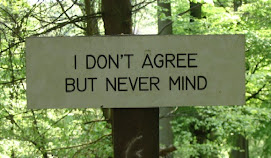
This marvellous moulding was on an old American Ford, parked in a Newbury car park. It's not just practical in that it 'does a job', but it was styled to an extreme - the 'space age' influence that also gave US cars their huge winged tail fins.
But apart from encourage me to get out the camera, this tail light also set me reflecting (Ho Ho!) about current styling and engineering trends on cars.
There are a number of recent changes to car lighting, including 'white' lenses, LEDs replacing traditional 'bulbs', the actual design of light clusters, and the positioning of indicators.
Until recently, indicators had an orange plastic lens, and a clear bulb. Now it's usual for indicators to be an orange bulb set back in to a reflector, with a clear cover. Often this will be set within a light cluster which is multi-facetted chrome. Personally, I find these 'white' indicators more difficult to see. That's not to say that I don't ever see them - just that there is often a smaller 'bright' area than thee would usually be with the older orange plastic, which gave a large illuminated 'surface.
Another potential problem is that the large, styled, chromed, areas of the light clusters are also very good at reflecting sunlight - which is far brighter than any 35W light bulb is ever going to be!
Of course, the introduction of LED lighting is well under way - one lighting manufacturer has a complete set of lights which can completely replace the headlamps too - although the first common use was with high-level brake lights. These were particularly effective because they lit up much quicker than the incandescent lamps - if my memory serves me the figure of 400 milliseconds was mentioned - a useful time-saving to aid the reactions of following drivers. They're also less susceptible to damage from vibration, and usually have a much longer life, than traditional lighting.
But, again, I see a drawback when all the old lamps are replaced by LEDs, because LEDs appear as either 'on' or 'off' don't have the 'in-between' transition state. Is that important? Well, driving often relies on getting information quickly, and a quick glance at a flashing LED indicator will catch it either on or off, but a glance towards a bulb will also have the third (or perhaps third and fourth) transition stages to catch someone's attention.
I mentioned light clusters earlier, and a recent trend in car styling is to move the indicator 'inboard' of the headlamp, where previously (and perhaps 'traditionally') the indicator was on the 'corner' outside of the headlamp. This move may be to do with crash performance (I'm guessing here!) when pedestrian safety is tested. Again, I find the 'inboard' indicators more difficult to see - perhaps because they're not where I'm used to seeing them - but also they don't - in my opinion - show up so well from the side.
To be fair, another recent change ('recent' apart from BMW doing it on the K100RS in 1983!) is the use of indicators moulded into the car's door mirrors. But you've probably guessed . . . I don't like them either . . . Why? Because, again, it's not where I'm used to looking - but also because if a car is emerging from a side turning it's important to get some indication (sorry!) of which way the driver intends to go before the car is so far out that the door mirror is visible.
Even the lighting at the back of the car can be designed in a way which can obstruct either the view or the interpretation of the lights. The VW range includes some cars where the indicator is circled by the brake light - rather than the two being separate. Result: bright red light obscures smaller orange light.
Shall I continue? I'm really on a roll . . .
Another element (sorry :) ) of vehicle lighting is the actual position on the vehicle - I touched on this earlier. Some rear light clusters are placed high on the back, others lower down. Again, this may not be where you 'expect' to see the signal, so delaying your response. But a few days ago I happened upon an even worse design.
While following a car I was able to see through its front and rear screens, and see the brake lights of the car (a small 4x4) in front.
Note: just see the brake lights, and not just a single high-level light or LED array - this was a pair of brake lights high on the rear quarter.
I had no intention of overtaking - but it was just as well I didn't because the 4x had an additional set of brake lights lower down at 'bumper' level - with the indicators . . . and the flashing right hand indicator, only seen as the vehicle turned across the road.
.





No comments:
Post a Comment